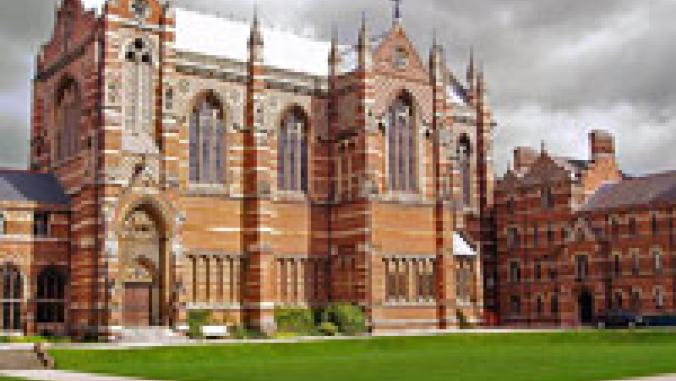Biodiversity: Crisis or Cusp?
Most environmentalists and conservation biologists believe that there is currently a crisis in biodiversity driven primarily by extinctions resulting from human activity. But a new and powerful idea challenges the idea that biodiversity is diminishing. By Brad Allenby
Most environmentalists and conservation biologists believe that there is currently a crisis in biodiversity driven primarily by extinctions resulting from human activity. Precise numbers are controversial for many reasons, the most fundamental being our limited grasp of how many species even exist, especially in the microbial realm (The Economist notes that Craig Venter of human genome fame recently reported 47,000 new species of bacteria from one sample off the coast of Bermuda; previously about 5,000 species of bacteria had been classified in toto). Nonetheless, that there are a number of extinctions attributable at least in part to human activities, dating from megafauna extinctions thousands of years ago, is increasingly clear.
But a new and powerful idea challenges the idea that biodiversity is diminishing. Those who follow biotechnology know that we have already created viruses from basic molecular building blocks, and that creation of a baseline bacterium is only a few years away (the baseline bacteria could then be built up and customized by using packaged metabolic pathways, already being created at MIT and elsewhere). And the progress of genetically modified organism (GMO) technology continues despite strident opposition from deep greens. This raises the possibility that what appears to be a crisis is in fact simply a transition in the mechanisms by which biodiversity is produced: from “evolutionary biodiversity” to “designed biodiversity”. This line of thought would argue that a century from now, there may well be more, not less, biodiversity – but that biodiversity will be the result of human engineering of genomic systems, not the result of traditional biological evolution.
To consider this argument is not to say such a development is “good” or “bad”; merely to ask whether we are understanding the implications of, or indeed even perceiving, current trends. Certainly, such a transition raises difficult questions. For example, one of the advantages of “evolutionary biodiversity” is that it reflects the context within which it occurs, and it therefore leads to relatively stable and resilient systems. “Designed biodiversity,” however, may well reflect economic and cultural pressures, and short term industrial goals, that are not necessarily integrated with other components of the physical and biological world, and thus result in a biodiversity that is fragile and even dysfunctional. Moreover, for many who equate “nature” with the “Sacred” the idea of biodiversity arising from human intentionality verges on blasphemous, despite the fact that existing patterns of biodiversity already reflect human activities, and have done so for a long time.
But there is a high cost to refusing to perceive, or consider the implications of, the possibility that biodiversity is not in crisis, but in transition. If this trend is real, there are many profound consequences, from the religious and the ethical to the severely practical (e.g., how can humans purport to create anthropogenic biodiversity when we have so little knowledge of the structure and dynamics of the systems involved?). Such implications require considered thought and dialog from a number of perspectives, not just the technical. If groups which might contribute in important ways to such a dialog remove themselves from it by unconsidered opposition, it does not mean that the technologies will be stopped, but that important voices that might contribute to a more desirable trajectory for those technologies will have, in essence, deliberately chosen not to participate.
Although the question of the transition phase of biodiversity is a critical and important one for anybody seriously interested in sustainability, it hasn’t been addressed for a number of reasons, including the fact that the communities interested in biodiversity tend to have been trained, and to value, only “evolutionary biodiversity.” But ignoring phenomenon that challenge one’s ideology is a luxury that anyone who thinks sustainability is more than a slogan cannot afford. Accordingly, what sorts of research agenda does the biodiversity transition suggest?
Obviously, the first is to determine whether the purported trend exists, and, if so, how rapidly it is occurring? An important corollary is how it should be measured (irreducible information content of genomic systems is an obvious possible metric). The second is to establish a research program to look at the implications of the transition, to identify critical issues, and to begin dialogs intended to provide both accurate perception of the trends, and identify challenges and potential problems before they become locked in by technological and cultural evolution. These only begin the work, but are important steps towards responding to the challenges of living at the birth of the anthropogenic world.
----
Brad Allenby is professor of civil and environmental engineering at Arizona State University, a fellow at the University of Virginia’s Darden Graduate School of Business, and previously was AT&T’s vice president of environment, health, and safety.
But a new and powerful idea challenges the idea that biodiversity is diminishing. Those who follow biotechnology know that we have already created viruses from basic molecular building blocks, and that creation of a baseline bacterium is only a few years away (the baseline bacteria could then be built up and customized by using packaged metabolic pathways, already being created at MIT and elsewhere). And the progress of genetically modified organism (GMO) technology continues despite strident opposition from deep greens. This raises the possibility that what appears to be a crisis is in fact simply a transition in the mechanisms by which biodiversity is produced: from “evolutionary biodiversity” to “designed biodiversity”. This line of thought would argue that a century from now, there may well be more, not less, biodiversity – but that biodiversity will be the result of human engineering of genomic systems, not the result of traditional biological evolution.
To consider this argument is not to say such a development is “good” or “bad”; merely to ask whether we are understanding the implications of, or indeed even perceiving, current trends. Certainly, such a transition raises difficult questions. For example, one of the advantages of “evolutionary biodiversity” is that it reflects the context within which it occurs, and it therefore leads to relatively stable and resilient systems. “Designed biodiversity,” however, may well reflect economic and cultural pressures, and short term industrial goals, that are not necessarily integrated with other components of the physical and biological world, and thus result in a biodiversity that is fragile and even dysfunctional. Moreover, for many who equate “nature” with the “Sacred” the idea of biodiversity arising from human intentionality verges on blasphemous, despite the fact that existing patterns of biodiversity already reflect human activities, and have done so for a long time.
But there is a high cost to refusing to perceive, or consider the implications of, the possibility that biodiversity is not in crisis, but in transition. If this trend is real, there are many profound consequences, from the religious and the ethical to the severely practical (e.g., how can humans purport to create anthropogenic biodiversity when we have so little knowledge of the structure and dynamics of the systems involved?). Such implications require considered thought and dialog from a number of perspectives, not just the technical. If groups which might contribute in important ways to such a dialog remove themselves from it by unconsidered opposition, it does not mean that the technologies will be stopped, but that important voices that might contribute to a more desirable trajectory for those technologies will have, in essence, deliberately chosen not to participate.
Although the question of the transition phase of biodiversity is a critical and important one for anybody seriously interested in sustainability, it hasn’t been addressed for a number of reasons, including the fact that the communities interested in biodiversity tend to have been trained, and to value, only “evolutionary biodiversity.” But ignoring phenomenon that challenge one’s ideology is a luxury that anyone who thinks sustainability is more than a slogan cannot afford. Accordingly, what sorts of research agenda does the biodiversity transition suggest?
Obviously, the first is to determine whether the purported trend exists, and, if so, how rapidly it is occurring? An important corollary is how it should be measured (irreducible information content of genomic systems is an obvious possible metric). The second is to establish a research program to look at the implications of the transition, to identify critical issues, and to begin dialogs intended to provide both accurate perception of the trends, and identify challenges and potential problems before they become locked in by technological and cultural evolution. These only begin the work, but are important steps towards responding to the challenges of living at the birth of the anthropogenic world.
----
Brad Allenby is professor of civil and environmental engineering at Arizona State University, a fellow at the University of Virginia’s Darden Graduate School of Business, and previously was AT&T’s vice president of environment, health, and safety.



